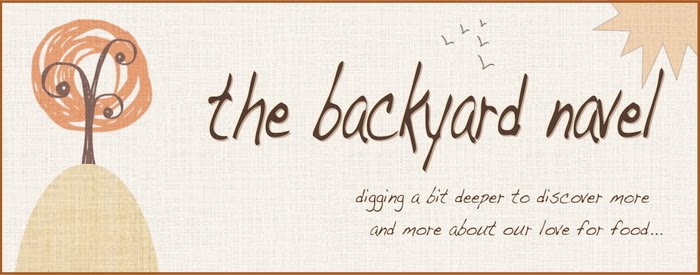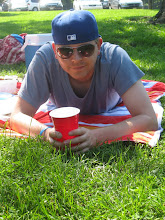The third post in a series of guest posts from the team at RIA and Balsan in the Elysian Hotel, Brian O'Connor gets down to the anatomy—sometimes hair pulling—of sourcing product, and specifically seafood, that's sustainably harvested. This blog exists because I wanted to know the stories behind where my food was coming from—and this post hits on that note, to the T. For more on Monday's dinner, go here.
 |
| The dining room at RIA. |
OK, now that we’ve set the ground rules for sustainability, how do they translate into real dishes at a real restaurant?
Yesterday I mentioned the challenge of a longer supply chain. At the restaurant we try to know everyone from whom we purchase product. We visit our local farms and hang out with the farmers at the market. Our Sommelier, Dan, gets regular visits from winemakers and makes his own way out to their properties as much as possible. While we’ve had a few chances to drop in on oyster farms in the northwest and we can work out a trip on a fishing boat now and then, it’s difficult in the middle of the country to build the kind of direct relationships we’re used to with the multitude of mariners who regularly catch our fish.
So what can we do to make up for it? “We have to know, and trust, our purveyors,” says our Chef de Cuisine Danny Grant. He singles out a handful: Pierless Fish, Ingrid Bengis Seafood, and especially Mika Higurashi at SONA (which stands for Sustainability of Natures and Aquaculture). “I know I can tell Mika what I am looking for and she will find the highest quality and the best source.” It’s a lesson learned over and over in this business: personal relationships are the path to success.
So now that we’re more comfortable outsourcing our direct purchasing to a trusted wholesaler, what do we buy? Let’s walk through a dish we’ll be serving Monday night: Sea Scallop, Caviar, Octopus, Fumet Blanc.
 |
| A RIA dish: Scallop and Octopus. With turnip, sturgeon caviar, fumet. |
The above is a chilled appetizer of gently poached scallop and octopus with hakurei turnip, American sturgeon caviar and a classic fumet emulsified with a touch of crème fraîche. It features a variety of seafood, each of which can be sustainably sourced.
Ingrid’s Diver-Harvested Scallops
Sea Scallops are a success story for sustainable seafood. In the 1970s industrial scallop capture nearly destroyed the natural population of Atlantic scallops. By the 80s the US began to restructure its scallop fisheries, introducing catch limits and rotational fishing and even closing off entire areas to harvest. The tenacious scallops showed their resilience and populations rebounded faster than anyone imagined.
Scallops have little inherent vulnerability. They are small, mature quickly and reproduce in large numbers (females produce 15-60 million eggs). Additionally, biomass has been closely watched since the 80s and populations are known to be large and strong. While East Coast US fishing regimes are not always thoroughly enforced, the fisheries have been managed reasonably well.
However, there remain concerns about by-catch and habitat damage due to the trawling used to capture the majority of commercial scallops. These trawls scrape along the ocean bottom, regularly upsetting the balance of the ecosystem and also capturing skate, flounder, sea turtles and other marine life.
 |
| From a diver's eyes via piggyhiggins' photostream. |
Thankfully, a responsible alternative exists: scallops hand-harvested by divers. This less-invasive method avoids much of the ecosystem damage and by-catch while also functioning on a day-to-day basis. Instead of large ships dredging up scallops and then holding them aboard for a week or two before returning to land, the “diver” scallops are harvested in the morning and brought ashore in the afternoon. By the next day we have them in the kitchen.
When they come ashore, Ingrid Bengis-Palei or one of her employees is waiting for them. Ingrid Bengis Seafood was a pioneer in the Northeast quality and sustainability revolution of the 80s and 90s (she’s been called the Alice Waters of seafood for her role). She knows most of the Mainers who gather seafood in the icy waters around Deer Isle and she works with them to find the best of the best. As so often happens, the individual touch so important to sustainability also brings us product of the highest quality.
Wild Spanish Pot-Caught Octopus
 |
| Like lobster pots in New England, these pots help Spanish fisherman effectively catch wild octopus, via catrien's photostream. |
Researching Octopus is a great way to dive into the complexities of sustainability. A variety of octopus fisheries exist worldwide, each of them managed differently. A quick glance at the Monterey Bay Aquarium’s seafood card finds international wild octopus listed as “avoid.” Uh oh. However, the Aquarium publishes more detailed Seafood Reports that approach the issue with an academic level of detail and flesh out more specifics for each fishery. The major reason octopus gets a red “avoid” is because it is nearly impossible, sitting at a sushi counter or browsing in a grocery store, to reliably tell the provenance of the product. With a bit of research, though, one can find sources of responsibly caught octopus.
Our relationships help us find these sources. We get our wild octopus from Spain, where fisherman head out daily to pull in their pot traps. The octopus has a relatively short lifecycle and produces hundreds of eggs, which means it has little inherent vulnerability. Overfishing does not occur and the inland pots catch mostly mature octopus with negligible by-catch. The true size of the stock is unknown, but fishing levels have remained constant for nearly 30 years in a well-watched regime. The remaining environmental concerns revolve around uncertainty: little is know about the octopus’s role in the larger food chain.
Additionally, Spanish fisheries have been remarkably creative in responding to the ecological and economic challenges of modern fishing. Spanish institutes often develop and fund those Sardine-counting studies I mentioned yesterday and the Spanish have been at the forefront of modernizing aquaculture to restore marine environments (more on that in my final post).
Petrossian American Sturgeon Caviar
 |
| Petrossian is a caviar staple, and a staple in our kitchen, too. |
Unlike the scallop, the wild sturgeon is not a success story. Sturgeon are long-lived fish and they tend to reproduce rarely. They are inherently vulnerable to overfishing.
Worldwide stocks remain at levels so dangerously low that many governments have outlawed their capture. Black market fishing continues, often catching the fish only to open them and remove the gleaming black caviar inside. As stocks near extinction (and the remaining fish tend to be chock full of PCBs and Mercury), the US has banned the import of Caspian Sea sturgeon caviar.
In the US wild sturgeon are making a comeback and there is even one viable (and heavily regulated) commercial fishery in the Columbia River. The meat of these fish is delicious. For caviar, however, we turn to aquaculture—fish farming.
After years of research and failed experiments, in the 1980s scientists in California finally succeeded in raising sturgeon in captivity. Since then, commercial sturgeon aquaculture has taken off and currently exists in three states with plans to expand to others. As these operations improve, caviar packers have begun to partner with them to cure, pack and age the sturgeon roe in the quest to create a product comparable to the legendary Caspian caviar.
Petrossian has been selling caviar since the 1920’s, when they worked with Cesar Ritz to establish caviar as a symbol of luxury. While there is a certain status conveyed by the tiny eggs, we like them because they are delicious—well cared for, aged and packed.
Petrossian sources their sturgeon roe from Stolt Sea Farms in Sacremento, California. As might be imagined, aquaculture avoids the sustainability concerns of wild seafood such as population vulnerabilities and overfishing. By-catch isn’t really a problem when one is raising only fish for harvest.
There are, however, other environmental concerns associated with aquaculture (more on this in the next installment!) and Stolt does a fine job addressing them. The sturgeon are raised in water that is re-circulated, avoiding the escape of farmed fish or waste into natural ecosystems. The waste is processed and sold as fertilizer. The one remaining challenge in current sturgeon aquaculture is that the fish are carnivorous and eat more seafood than they produce.
One Dish, 1200 Words
Worldwide stocks remain at levels so dangerously low that many governments have outlawed their capture. Black market fishing continues, often catching the fish only to open them and remove the gleaming black caviar inside. As stocks near extinction (and the remaining fish tend to be chock full of PCBs and Mercury), the US has banned the import of Caspian Sea sturgeon caviar.
In the US wild sturgeon are making a comeback and there is even one viable (and heavily regulated) commercial fishery in the Columbia River. The meat of these fish is delicious. For caviar, however, we turn to aquaculture—fish farming.
After years of research and failed experiments, in the 1980s scientists in California finally succeeded in raising sturgeon in captivity. Since then, commercial sturgeon aquaculture has taken off and currently exists in three states with plans to expand to others. As these operations improve, caviar packers have begun to partner with them to cure, pack and age the sturgeon roe in the quest to create a product comparable to the legendary Caspian caviar.
Petrossian has been selling caviar since the 1920’s, when they worked with Cesar Ritz to establish caviar as a symbol of luxury. While there is a certain status conveyed by the tiny eggs, we like them because they are delicious—well cared for, aged and packed.
Petrossian sources their sturgeon roe from Stolt Sea Farms in Sacremento, California. As might be imagined, aquaculture avoids the sustainability concerns of wild seafood such as population vulnerabilities and overfishing. By-catch isn’t really a problem when one is raising only fish for harvest.
There are, however, other environmental concerns associated with aquaculture (more on this in the next installment!) and Stolt does a fine job addressing them. The sturgeon are raised in water that is re-circulated, avoiding the escape of farmed fish or waste into natural ecosystems. The waste is processed and sold as fertilizer. The one remaining challenge in current sturgeon aquaculture is that the fish are carnivorous and eat more seafood than they produce.
One Dish, 1200 Words
 |
| The heartbeat of the kitchen... |
OK—I hope the anatomy of a single dish’s sourcing helps to illuminate some of the thought that goes into selecting our seafood. Are we perfectly sustainable? Of course not. Are there trade-offs and compromises involved in our decisions and sourcing? Certainly. But by utilizing the resources we have and cultivating relationships with like-minded people, we can take great steps toward operating a more responsible restaurant.
One of the most common refrains in discussions of sustainable seafood is that transparency is key. We need transparency from the folks catching the fish about their methods and the status of their fisheries. We need transparency from our purveyors regarding the provenance of the product. And we need to remember that our guests need transparency in order to make well-informed decisions. We don’t list every single purveyor on our menu, but we do our very best to ensure our team knows the source of every single item on the plate.
By the way, the hakurei turnips come from Heritage Prairie Farm in La Fox, Illinois.





No comments:
Post a Comment